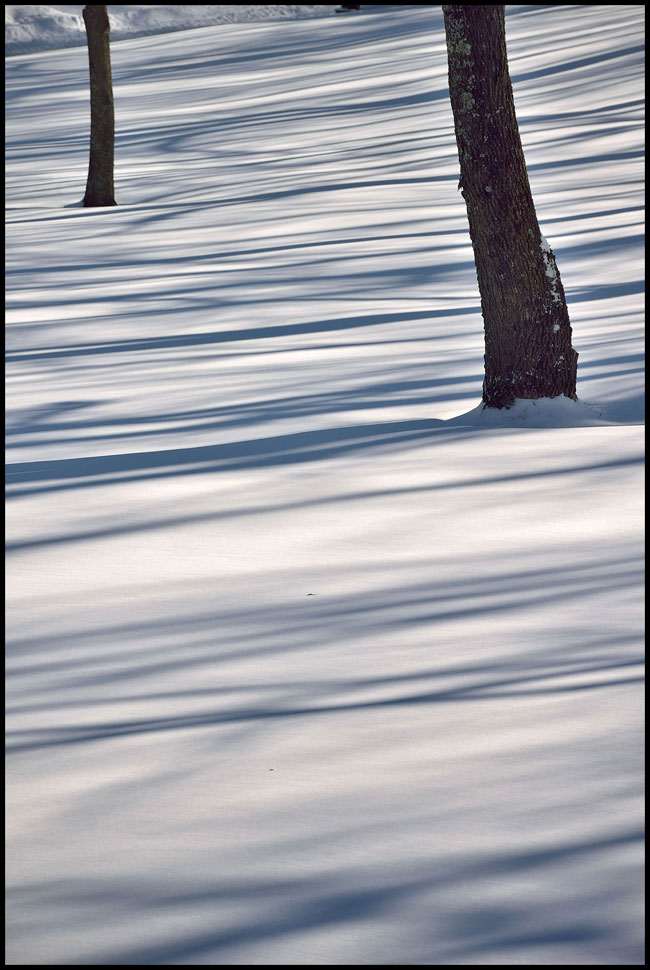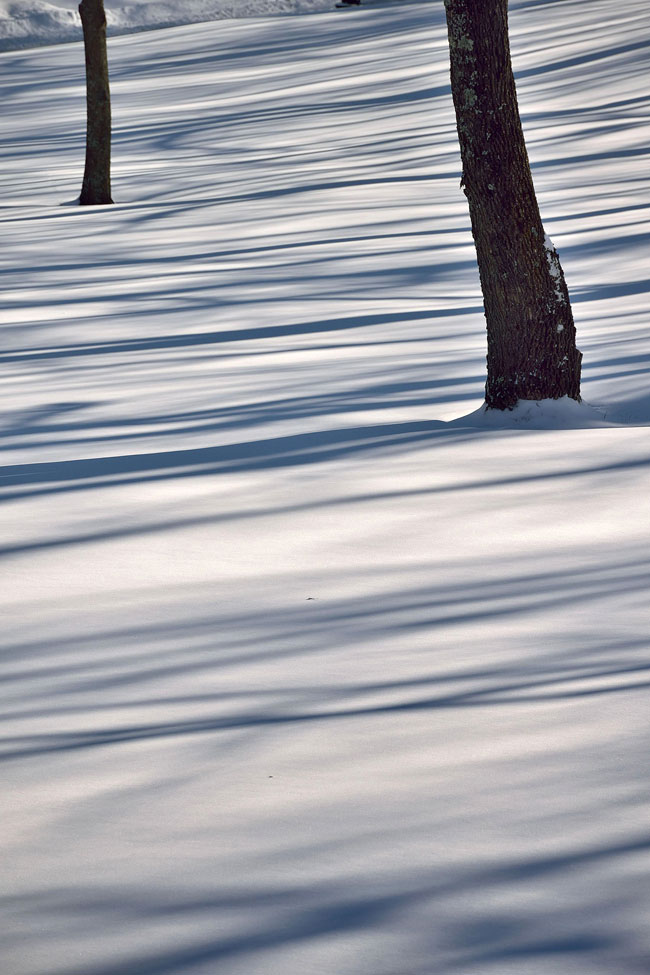One Shot: No Exit
How a simple change can alter a photo’s feeling
What makes a photo particularly memorable?
Perhaps it has relevance to your personal history; or it's the precise capture of a subject's personality; or there's a nostalgic connection to a place and time.
Or maybe the reason is something totally unexpected.
As a writer for the Learn & Explore section of the Nikon website I see a lot of photos I consider memorable, but this one, taken during the Northeast's snowstorm season by Nikon School instructor Bill Durrence, comes with its own memorable story.
When he's traveling, Bill likes to send an image and a short e-mail message each day to a list of friends and colleagues. He calls these communications "post cards," and when this one arrives I call Diane Berkenfeld, editor of L&E.
"Did you get an e-mail from Bill?" I ask. "The shadows on the snow photo?"
"Great shot," she says.
"He's a terrific photographer," I say. "What about doing a story with him?"
Fast forward a few months and Diane and I are back on the phone, looking at contact sheets of Bill's photos on our monitors, choosing images for the story. We're editing down from initial selects when Diane says, "We can't forget the snow shadows picture."
So we go back through the contacts, looking for it among a group of similars. We know it's there—we specifically asked Bill to send it—but we're not immediately finding it. Then Diane says, "There it is, number ‘0021 Final’." And she's right, it's there...but why isn't it jumping out at me the way it did when I saw the post card? "Why am I not as excited about it?" I ask. "It's the same shot we saw."
D5300, AF-S DX NIKKOR 18-140mm f/3.5-5.6G ED VR, 1/640 second, f/8, ISO 100, aperture-priority, Matrix metering.
D5300, AF-S DX NIKKOR 18-140mm f/3.5-5.6G ED VR, 1/640 second, f/8, ISO 100, aperture-priority, Matrix metering.
But as I look at it, I realize it isn't exactly the same, and just as I start to say, "Could it be...?" Diane says, "It's the border."
"Yeah, you're right," I say, "but how can a border make such a difference?"
"Find out what Bill has to say," Diane says. "See if there's a 'One Shot' story here."
What Bill has to say is this: "It's a practical issue. Anytime you have bright tones next to the edge of the frame, those tones become an escape route out of the picture. Your eye is drawn to brightness, and in a photograph like this, with so much snow along the edges, it's easy to kind of drift in and out of the picture, especially with the shadow and snow lines moving your eye back and forth. The border locks you in; it contains you in the picture. Your reaction to the picture illustrates that practical point—without the border, you weren't locked in; it didn't grab you the same way."
While Bill first put borders around photos with light tones at the edges, adding them has become a stylistic touch, one that he applies to all his presentation images.
"And there's another reason for the border," Bill adds. "It's more philosophical, and it may sound weird, but the nature of a still photograph is that it's a frozen moment. There's time before and after that moment, and there's all the stuff that's outside the frame. When I teach, I talk a lot about how the photographer is responsible for everything in the picture, and the frame is where you manage that information. You get to decide what people know and what they don't know; it's how you limit or expand the information that's in the scene. Putting on that black border is my way of stating that although there is more, this is what I want you to see."
Bill took the photo on the campus of Regis College in Weston, Massachusetts. "I live in Savannah," he says, "where we never see snow. In my travels for the Nikon School I'll be in places where there's snow on the ground, but most of the time when I get there it's slushy, dirty or full of footprints, but not photographic possibilities." So as soon as he'd finished the first section of that day's school, he bundled up and went out to shoot.
In this frame he captured all that appealed to him: the shape of the pristine snow, the flow of the terrain, the presence of both light and dark shadows. "It's in the soft highlight and shadow pattern of the snow that you get a sense of dimensionality," he says.
All of which makes the photo memorable...while a thin black line makes it even more so.
The specs: D5300, AF-S DX NIKKOR 18-140mm f/3.5-5.6G ED VR, 1/640 second, f/8, ISO 100, aperture-priority, Matrix metering.







